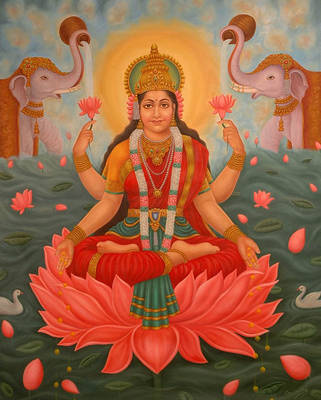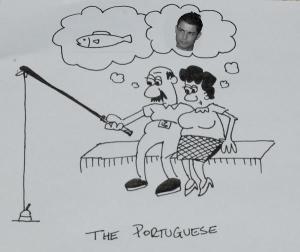The essay below was written especially for the ELB readers by Nina Romanska, one of my former students. I would like to thank her very much for her insights and I would like to wish her “Happy Birthday!!!”, as she is celebrating her birthday on this very day. 🙂 🙂 😉 🙂 🙂
 The Erasmus Experience
The Erasmus Experience
in
Barcelona.
A Student’s Account
Erasmus is a popular student exchange programme nowadays. As many other students, I decided to take part in it because I had studied abroad before and I knew that it would be an amazing experience. I love Spanish, so Spain was an obvious choice for me. I didn’t have any doubts about the city either, I knew that Barcelona would be a perfect place for me. It’s a big city, the capital of Catalunya, definitely one of the most interesting places in Spain. I had never been there before, but I simply trusted my intuition, the view of the city from “The Shadow of the Wind” written by Carlos Ruiz Zafón, and “L’Auberge Espagnole,” known as the “Erasmus movie,” which describes the Erasmus experience of a French student in Barcelona.
However, my beginnings in that beautiful city were like from some comedy-drama. I remember my first day there. I arrived in Barcelona at about 2 o’ clock at night, tired after the bus ride from the airport in Reus. It was really hot, but I was wearing the coat and pullover that I didn’t have place for in my luggage. I took the metro to a district nearby the Sagrada Familia, where my friend was living. The escalators were out of order, and I could’t find any elevator either, so, with no Spanish prince on a white horse to come to my rescue, I had to carry my suitcase and my backpack all the way… Finally, I saw the Sagrada Familia. I stopped for a while to admire it and then went to look for the direction of my friend’s place. I was really impressed with the church at first sight, but the truth is that I was more concerned with being robbed at the time, as I was carrying all my jewellery, and had the money to rent a room on me.
Next day I woke up at 6 and started to look for a room to rent.  The experience was totally horrible. Even if, on the outside, the old buildings in Barcelona are very beautiful, inside I came across dirty rooms and flats, strange people of all ages (renting is really expensive there, so not only students share flats), old guys with propositions, loads of insects, lack of sunshine, funny smells. All of these at an incredibly expensive price. Until I found a suitable flat I decided to share a room with another Polish student. She lived with the owner of the flat, a guy from Morocco who was walking half naked in flat, wearing just pants and a DJ cap, so I felt like I needed to hide myself. He worked as a bodyguard in club, so I could go back to the flat after 11pm, when he went to work.
The experience was totally horrible. Even if, on the outside, the old buildings in Barcelona are very beautiful, inside I came across dirty rooms and flats, strange people of all ages (renting is really expensive there, so not only students share flats), old guys with propositions, loads of insects, lack of sunshine, funny smells. All of these at an incredibly expensive price. Until I found a suitable flat I decided to share a room with another Polish student. She lived with the owner of the flat, a guy from Morocco who was walking half naked in flat, wearing just pants and a DJ cap, so I felt like I needed to hide myself. He worked as a bodyguard in club, so I could go back to the flat after 11pm, when he went to work.
 After six days of looking for a flat from 8 am to 11pm, I found my room and started my true Erasmus life. My new flat mates were three Erasmus students from Romania, Finland and Germany. My room was really small and without any windows, but somehow I got used to it. 😉
After six days of looking for a flat from 8 am to 11pm, I found my room and started my true Erasmus life. My new flat mates were three Erasmus students from Romania, Finland and Germany. My room was really small and without any windows, but somehow I got used to it. 😉
Once I got time more time on my hands to explore, I realised that Barcelona is a really great city. There are a lot of really interesting places to see. Thanks to Gaudi (the Catalan Modernist), no other city can be compared to Barcelona. This Catalan architect gave Barcelona a really beautiful gift: an originality and style that made me feel that buildings of his project were taken out of some kind of fairytale kingdom.  Barcelona has everything; we can lose ourselves in the narrow streets of the Barrio Gothic and Raval, admire the elegant buildings of Gracia, walk on the beach or go to a match of FC Barcelona at Camp Nou.
Barcelona has everything; we can lose ourselves in the narrow streets of the Barrio Gothic and Raval, admire the elegant buildings of Gracia, walk on the beach or go to a match of FC Barcelona at Camp Nou.
There are, however, some bad points of living in the city. Loads of turists… almost everywhere you look, and this results in high prices and robberies. Barcelona is a really cosmopolitan city, so I felt more Spain in Madrid or Sevilla.
Somehow, Catalan wasn’t a big problem for me. It’s something between Spanish and French, so I had no trouble understanding most of it.
Even though I really loved Barcelona as a city and my newly-found home, the best part of my exchange program there were the people. I met a lot of great people from all over the world. The community of international students became my family, which is something that I really miss right now. Meeting people of different cultures, religions, beliefs and from different continents is a beautiful experience and made me more open-minded. Poland is a country of one nation, one religion, so my friendships with other Erasmus students helped me realise that many stereotypes about particular nations and countries were totally wrong.
As a nation, the Spanish are really cheerful compared to the Polish. They don’t care so much about exams, money, or the perfect look. I would like to follow that joy and optimism in my life.
I studied at the Faculty of Law of the University of Barcelona. The lectures were quite interesting. They gave the students interested in international law a wide range of study opportunities.

I also took part in the special programme ‘Introduction to Spanish Law,’ which was organised for international students. The teachers were friendly and much less formal than in Poland. Half of the available courses were in Spanish, and the other half in Catalan.
I would recommend taking part in an Erasmus programme to any student out there. It’s a great adventure, one impossible to forget! 😉
Filed under: ■ Erasmus, ■ Good Old Student Life, ■ Movies, ■ Nationalities and Stereotypes, ■ Spain, ■ The World, ►12.OFF THE MAP▼







Recent Comments